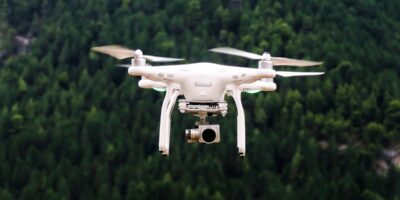Understanding the Basics of Flying
Flying a plane may seem daunting at first. Understanding the fundamentals makes the process manageable. Whether you’re flying a small private aircraft or a commercial jet, the principles remain similar.

The Parts of an Airplane
Begin by familiarizing yourself with the main components. The cockpit is where the pilot sits. This is the control center, with numerous instruments and controls. The wings provide lift. The tail, or empennage, helps stabilize the plane.
- Cockpit: The pilot’s command center, containing essential instruments.
- Fuselage: Holds the cockpit and passengers.
- Wings: Generate lift and stabilize the aircraft.
- Engines: Provide thrust for movement.
- Tail: Provides control and stability.
Instruments and Controls
The cockpit holds several important instruments. The attitude indicator shows the aircraft’s orientation relative to the horizon. The altimeter measures altitude above sea level. The airspeed indicator, as its name suggests, shows how fast the plane is flying through the air. The vertical speed indicator shows the rate of climb or descent. Navigate using the compass and GPS.
- Attitude Indicator: Identifies the plane’s orientation.
- Altimeter: Displays altitude levels.
- Airspeed Indicator: Shows airspeed in knots.
- Vertical Speed Indicator: Measures climb or descent rate.
- Compass and GPS: Used for navigation.
Pre-Flight Preparation
Before taking off, perform a thorough pre-flight check. Inspect the aircraft exterior, focusing on critical areas like the wings and fuselage. Check the fuel levels and the engine for any leaks or issues. Inside the cockpit, verify that all instruments are functioning correctly. A good pilot always checks the weather forecast to anticipate conditions.
Learning to Take Off
On the runway, gradually increase the throttle to build speed. Monitor the airspeed as you accelerate. At a critical speed known as V1, you commit to takeoff. Once you reach Vr, or rotation speed, gently pull back on the yoke. The nose lifts, and the plane becomes airborne. Maintain a steady climb and use the attitude indicator to stabilize the aircraft. Gear up and reduce power once you’re at a safe altitude, merging into a steady climb rate.
Mastering Flight Maneuvers
Flight involves several basic maneuvers. To ascend, increase throttle and gently pitch up the nose. For descent, reduce throttle and pitch the nose down. Turning requires a balance of ailerons and rudders. Gently tilt the control yoke to bank the wings while applying rudder pressure to maintain coordinated flight. Slow flight increases lift but requires careful throttle management to avoid stalling. Practice steady flight, turns, climbs, and descents to gain confidence.
Communication with Air Traffic Control
Air traffic control, or ATC, ensures safe navigation for pilots. Use the radio to communicate with ATC, who provides instructions on navigation, altitude, and approach. Becoming familiar with standard radio procedures ensures clear communication. Practice using common aviation phrases, such as roger for acknowledgment or wilco for will comply. When flying near airports, the tower controller provides specific guidance.
Understanding Navigation
Navigation requires understanding of airways, VOR stations, and GPS. Airways are like highways in the sky, guiding flight paths. VOR stations are ground-based beacons used for direction finding. The GPS system aids in precise navigation. Pilots use a combination of these tools to chart a course from departure to arrival. Staying on course involves frequent checking of instruments and adjustments as needed.
Approaching and Landing
Landing a plane safely is a critical component of flying. Approach involves reducing speed and altitude gradually. The landing gear is deployed as you approach the runway. Monitor the glide slope and alignment with the runway. Touchdown requires reducing power and leveling the plane. Gently apply brakes after touchdown to slow down safely. Practice contributes to smoother landings over time.
The Role of Checklists
Checklists are an integral part of aviation safety. Pilots use them at various stages of flight, from pre-flight to post-flight. They ensure no critical steps are missed. Even experienced pilots rely on checklists for efficient operation. Checklists cover everything from starting the engine to securing the plane post-landing. Instituting a routine checklist protocol enhances safety and familiarity.
Handling Emergencies
Emergencies, though rare, can occur. Pilots train to handle such situations. Basic procedures include maintaining control and assessing the situation. An engine failure may require an emergency landing. Pilots practice such maneuvers during training. Maintaining composure and following protocol is essential. Familiarity with emergency checklists ensures you handle situations effectively.
Continued Learning and Practice
Constant learning defines a good pilot. Regular practice hones skills. Simulators provide a safe environment for practice. Advanced courses offer deeper understanding of aerodynamics and avionics. Networking with other pilots can provide insights and support. Many resources, like online forums and books, contribute to skill enhancement. Continuous education builds confidence and competence.
Legal and Safety Considerations
Pilots must adhere to regulations set by aviation authorities like the FAA or ICAO. Rules cover licensing, medical certification, and operational procedures. Adhering to these standards is paramount for safety. Pilots must also respect restricted airspace and comply with weight and balance restrictions. Safety practices, like thorough weather checks and proper maintenance, are a pilot’s responsibility.




Subscribe for Updates
Get the latest articles delivered to your inbox.
We respect your privacy. Unsubscribe anytime.